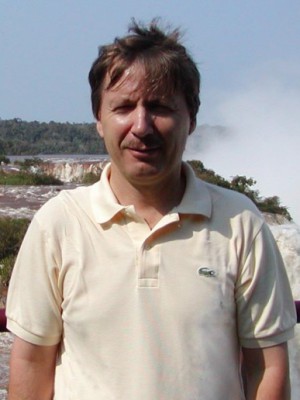abstract
Surface pyroelectricity and piezoelectricity induced by water incorporation during growth in alpha-glycine were investigated. Using the periodic temperature change technique, we have determined the thickness (similar to 280 mu m) of the near surface layer (NSL) and its pyroelectric coefficient (160 pC/(K x cm(2)) at 23 degrees C) independently. The thickness of NSL remains nearly constant till 60 degrees C and the pyroelectric effect vanishes abruptly by 70 degrees C. The piezoelectric effect, 0.1 pm/V at 23 degrees C measured with an interferometer, followed the same temperature dependence as the pyroelectric effect. Abrupt disappearance of both effects at 70 degrees C is irreversible and suggests that water incorporation to alpha-glycine forms a well defined near surface phase, which is different form alpha-glycine because it is polar but it too close to alpha-glycine to be distinguished by X-ray diffraction (XRD). The secondary pyroelectric effect was found to be <14% of the total, which is unexpectedly small for a material with a large thermal expansion coefficient. This implies that water incorporation infers minimal distortions in the host lattice. This finding suggests a path for the control of the piezoelectric and pyroelectric effects of the crystals using stereospecific incorporation of the guest molecules.
keywords
CRYSTALS
subject category
Materials Science
authors
Dishon, S; Ushakov, A; Nuraeva, A; Ehre, D; Lahav, M; Shur, V; Kholkin, A; Lubomirsky, I
our authors
acknowledgements
The equipment of the Ural Center for Shared Use Modern Nanotechnology UrFU was used. I.L. expresses his gratitude to Estate of Olga Klein-Astrachan fund, grant #721977.


